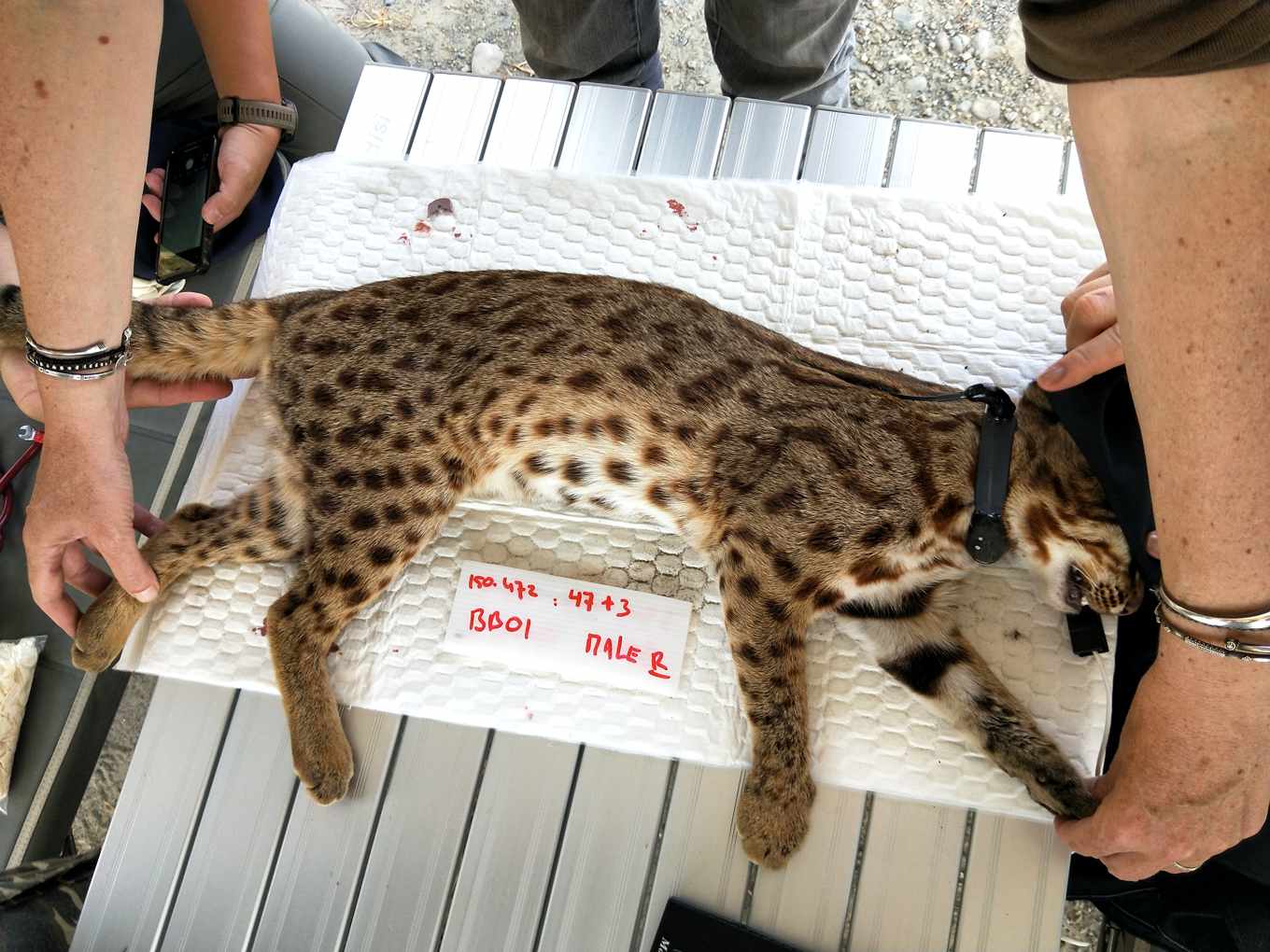Who killed Shi Hu? Road stone tiger detected highly toxic pesticides, pesticides and rat poison, long-term chronic poisoning
0share
The domestic endangered wild cat "stone tiger" faces not only road killings, but also chronic poisoning! The habitat of the stone tiger is in the shallow mountains, which overlaps with the area of human activity. Studies from National Taiwan University and Pingping University of Science and Technology have pointed out that long-term exposure to pesticides will increase the health risk of the stone tiger. The body of the stone-killing tiger was detected and rat poison was detected in the liver. on the other hand, highly toxic pesticides plus Baofu were detected in the stomach, and Taosong, a highly used insecticide in China, was detected.
Pei Jiaqi, a professor at the Institute of Wild Protection at Ping University of Science and Technology, said that Shihu is a high-order predator, and pesticides accumulate in the food chain through biomagnification. Although there is no direct evidence at present, all signs make people suspect that pesticides make Shihu sick and increase the probability of road killing.
Fan Chih-hao, a professor of health and engineering at National Taiwan University, tested 79 soil samples in Miaoli villages and towns, and a total of 67 pesticides were detected. Compared with the Shihulu road killing site, it was found that the pesticide risk index near the road killing site was indeed on the high side, especially in Zhuolan and Yuanli.


Endangered stone tiger faces habitat fragmentation and chronic pesticide poisoning.
There are only two species of wild cats in Taiwan, one of which is the presumed extinct clouded leopard, and the other is the endangered stone tiger (leopard cat). The stone tiger is often called a "bobcat," and its size is similar to that of a domestic cat. Existing research data show that the stone tiger mainly lives in shallow mountain areas below 1500 meters, and has been found in Miaoli, Taichung, Changhua, Nantou, and even Tainan.
At present, there are less than 500 stone tigers left in Taiwan, and the threat to the survival of stone tigers is closely related to human activities. The main human activity areas and stone tiger habitats overlap, the construction of engineering or activity sites will cause habitat fragmentation and deterioration, and the development of roads will also cut the habitat, resulting in common news that stone tigers are killed while shuttling, in addition, stone tiger also faces another major threat: pesticides and environmental drugs.
From 2015 to 2016, the Institute of Wildlife of the University of screen Science and Technology dissected the bodies of six stone-killing tigers. Pei Jiaqi, a professor at the institute, explained that rat poison was detected in the liver of cadavers, and pesticides were also detected in the stomach of some corpses. "the effect of rat poison is long-term, while pesticides are short-acting and decompose quickly. Pesticides will be detected, which means that Shi Hu has been exposed to a high-risk environment for a long time."
- Prev

The opening of Pingtung Coco Cross-region Promotion Institute is expected to promote the tourism of guest house industry.
Zhong Kongyi, vice chairman of the Hakka Committee, yesterday (7) represented Chairman Yang Changzhen at the opening ceremony of the Pingtung Hakka Cocoa Industry Interregional Promotion Institute, hoping to take advantage of the reconstruction and rebirth of the Wanluan Jiazuo Catholic Church. Let everyone see the Hakka in Pingtung and the world.
- Next

Did you buy flowers for the New year? Tulips and hyacinths take you abroad, and potted plants bring happiness and add new fashion packaging.
Did you buy flowers for the New year? Tulips and hyacinths take you abroad, and potted plants bring happiness and add new fashion packaging.
Related
- A course of planting techniques and methods on how to grow carrots
- How to plant the latest tulips?
- Is it better to pick tea in the morning or in the afternoon? When is the best time for tea to be picked? what is the third or fifth tea?
- Launch Yuanxiao Happy combination Haocha + Tea Yuan healthy Taste
- Penghu Tourism "Fireworks 20 Parade with You"
- 2022 West Lake Happiness holds "Digital Revitalization Voucher" and draws iphone13 and laptop.
- Banqiao Fuzhou social houses are designed to change start-up combined with police elimination to create a safe and livable environment
- The convenient measure of "mechanical weeding" in Xinbei has been abused and the Agriculture Bureau has imposed heavy penalties on the illegal land consolidation.
- Changgeng University Joins Hands with Four Memory Factories to Rescue Memory Talent Shortage
- The list of Taiwan's top 100 MVP managers is listed by the Director-General of the Farmers' Association of Sanxia District.

